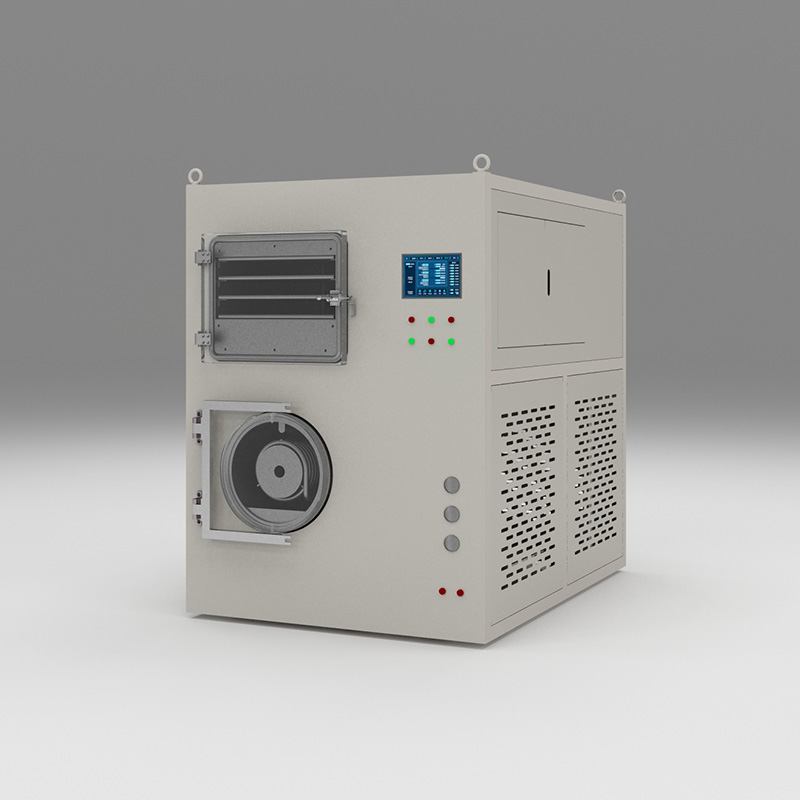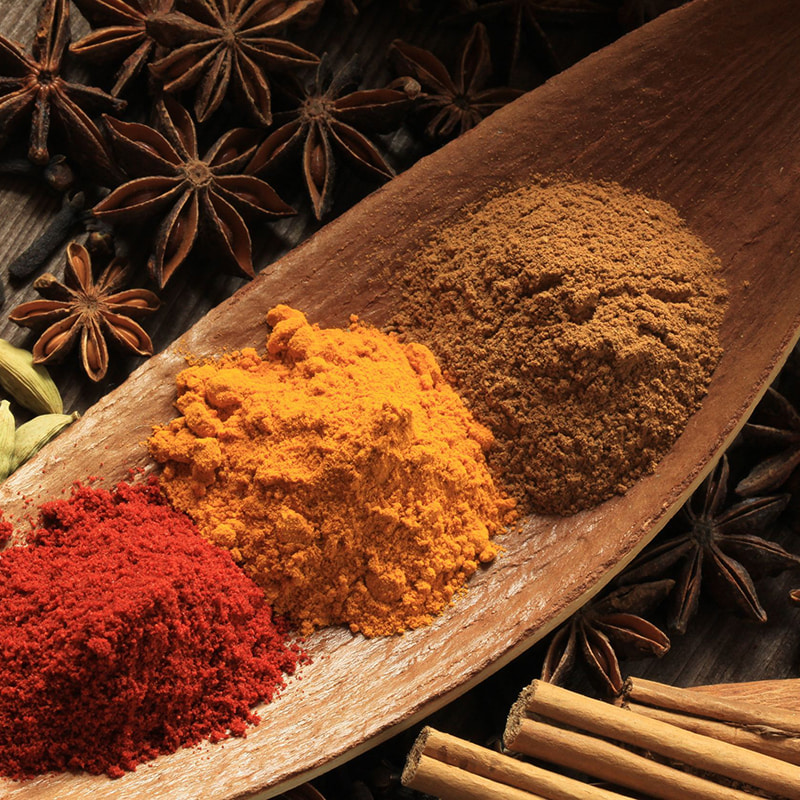Freeze-drying, or lyophilization, is a sophisticated process employed to preserve food and other materials while maintaining their original properties. Unlike conventional drying methods, which use high temperatures, freeze-drying operates at sub-zero temperatures. The key principle behind freeze-drying is sublimation, where water in its solid form (ice) transitions directly to vapor without passing through the liquid phase. This is accomplished by creating a vacuum environment and using low heat to draw moisture out of the product, in stages. For spices, this method of drying is particularly beneficial as it preserves the aromatic oils and flavors, which are the defining characteristics of each spice. Freeze-drying prevents degradation that typically occurs during high-heat drying, where heat can destroy delicate compounds in spices, leading to loss of flavor and potency. Our spice freeze-drying equipment is meticulously designed to ensure that each batch undergoes carefully controlled process. We monitor the entire cycle from freezing through to sublimation and secondary drying. This level of precision ensures that the spices maintain their structure, color, and taste. By maintaining low temperatures throughout, we prevent oxidation and preserve the essential oils that contribute to the rich flavors of spices. In contrast to conventional methods, such as air drying or sun drying, freeze-drying allows spices to retain a higher concentration of antioxidants, volatile oils, and other bioactive compounds. These characteristics are important for ensuring that the spices not only taste fresh but also remain potent and nutritionally rich, making them an ideal choice for modern food production.
The freeze-drying process is a multi-step operation that requires careful regulation of temperature and pressure to ensure optimal results. The phases of freezing, primary drying, and secondary drying each serve distinct functions in the preservation of spices. Freezing Phase: The first step in the freeze-drying process is freezing the spice. The rapid freezing of spices ensures that ice crystals form uniformly throughout the product. This is important because large ice crystals can rupture cellular structures, which can compromise both the texture and the flavor of the spice. The freezing phase is conducted at temperatures far below the typical freezing point of water, usually around -40°C or lower. The speed of freezing is critical; slow freezing can cause ice crystals to grow too large, while rapid freezing ensures small, fine crystals that do not damage the integrity of the spice. Primary Drying (Sublimation): Once the spices are frozen, the next stage involves the reduction of pressure in the vacuum chamber, allowing the frozen water to sublimate. During sublimation, the ice turns directly into vapor without becoming liquid. This process requires precise temperature and pressure control to ensure that moisture is removed gradually and consistently. The temperature during primary drying is generally kept below the spice’s freezing point to prevent melting. The delicate balance of temperature and pressure ensures that the spices retain their original shape and do not suffer from the heat damage often seen with other drying methods. Secondary Drying (Desorption): The final phase of freeze-drying removes any residual water that remains bound within the spice. This is achieved by slightly increasing the temperature while maintaining the low pressure environment. During secondary drying, bound moisture is released, ensuring that the spice is thoroughly dehydrated. This step is essential to achieving the long shelf life that freeze-dried products are known for, as any remaining moisture can lead to microbial growth or spoilage over time. Each phase of this process is finely tuned to ensure that spices retain their flavor, color, and essential oils. By maintaining low temperatures and adjusting pressure precisely, we ensure that the spices are preserved at their best quality, ready for long-term storage and further processing.
Pressure and temperature control are at the heart of the freeze-drying process. These two variables must be managed with extreme precision to ensure that the sublimation process occurs properly and the spices are dried without compromising their inherent qualities. Pressure Control: In freeze-drying, pressure plays a vital role in the sublimation of ice into vapor. The vacuum chamber is responsible for reducing the pressure around the spices. This low-pressure environment allows water molecules in their frozen state to transition directly into vapor without passing through the liquid phase. Pressure is carefully monitored and controlled to maintain a low environment while ensuring that no liquid water remains. The pressure must be kept at a level that enables sublimation without causing the spices to collapse or lose essential properties. Temperature Control: Temperature control is equally crucial. The rate at which the temperature is increased during the sublimation process influences how well the spice maintains its color, flavor, and texture. If the temperature is too high, the heat may cause the loss of volatile oils or compromise the structural integrity of the spice. On the other hand, if the temperature is too low, sublimation may be inefficient, and moisture may not be fully removed. This delicate balance ensures that spices retain their full flavor profile and texture, contributing to their high quality post-processing. Sieno Freeze-drying Technology Research Institute (Jiangsu) Co., Ltd. has developed intelligent systems that monitor and adjust these variables in real time. By utilizing data-driven analytics and advanced sensors, we ensure that every batch of spices is dried to perfection, preserving their inherent qualities and ensuring consistency throughout production.
Freeze-drying offers a distinct advantage over traditional drying methods in terms of preserving the natural properties of spices. One of the key benefits of freeze-drying is that it prevents the degradation of aromatic compounds, essential oils, and nutrients, which are crucial to the flavor and health benefits of spices. Preservation of Volatile Oils: Spices are rich in volatile oils, which contribute to their distinct aromas and flavors. Heat-based drying methods can cause these oils to evaporate, leading to a loss of flavor. Freeze-drying, however, preserves the delicate oils by preventing them from vaporizing during the drying process. This is especially important for spices like saffron, cinnamon, and basil, where flavor loss would significantly degrade the product's quality. Prevention of Oxidation: Oxidation is one of the primary causes of spoilage in dried spices. This process occurs when the spice is exposed to air and light, which leads to a breakdown of the chemical components responsible for the spice’s aroma and flavor. Freeze-drying, with its vacuum environment, minimizes exposure to oxygen, preventing oxidation and ensuring that the spice remains fresh for a longer period. Retention of Color and Nutrients: The retention of color and nutrients is another significant advantage of freeze-drying. In heat-based drying, spices often lose their vibrant colors and a significant portion of their nutritional value due to heat-induced chemical changes. Freeze-drying avoids these issues, ensuring that the spices maintain their original appearance and nutritional profile, including vitamins, minerals, and antioxidants. For us, ensuring the preservation of these crucial elements is at the core of our freeze-drying technology.
Freeze-drying equipment for spices consists of several integral components that work in tandem to ensure the efficient drying of the product. Each part is designed with precision to ensure that the freezing, sublimation, and drying processes occur seamlessly. Freezer: The freezer is where the spices are initially cooled to sub-zero temperatures. This component must be capable of rapid freezing to prevent the formation of large ice crystals, which can damage the spice’s cellular structure. Our equipment utilizes high-performance freezing units that ensure spices freeze quickly and uniformly, maintaining their original texture and structural integrity. Vacuum Chamber: The vacuum chamber is where the key sublimation process occurs. The vacuum lowers the pressure around the frozen spices, allowing the ice to sublimate into vapor. This environment also prevents the spices from melting, ensuring that the entire drying process happens at low temperatures. The vacuum chamber must maintain precise pressure levels to optimize the sublimation process and prevent loss of quality. Condenser: The condenser is responsible for capturing the vapor that is released during sublimation. It cools the vapor and returns the moisture back into solid form, effectively maintaining a low moisture environment in the vacuum chamber. The condenser’s efficiency plays a major role in the overall energy usage of the system, and we ensure that our systems are optimized for maximum efficiency, with minimal energy consumption. Drying Shelves: The drying shelves hold the spices during the freeze-drying process. They are made from heat-conductive materials that help maintain uniform temperature distribution during the process. The shelves must allow adequate airflow to facilitate uniform drying and prevent uneven moisture content in the final product. Our shelves are designed to maximize space utilization and optimize airflow to ensure consistent drying across all types of spices.

 Spice Automatic Filling System for Light-Proof Bottles
Spice Automatic Filling System for Light-Proof Bottles
 Spice Aluminum Foil Nitrogen Filling Packaging Machine
Spice Aluminum Foil Nitrogen Filling Packaging Machine
 Spice Nano-Encapsulation Machine
Spice Nano-Encapsulation Machine
 Spice Airflow Pulverizer
Spice Airflow Pulverizer
 Spice Online Gas Chromatograph
Spice Online Gas Chromatograph
 Spice Inert Gas Protection System
Spice Inert Gas Protection System
 Spice Vacuum Freeze Dryer
Spice Vacuum Freeze Dryer
 Spice Low Temperature Distillation Tower
Spice Low Temperature Distillation Tower
 Spice Supercritical CO₂ Extraction Device
Spice Supercritical CO₂ Extraction Device
 Spice Optical Sorter
Spice Optical Sorter
 Spice Bubble Cleaner
Spice Bubble Cleaner